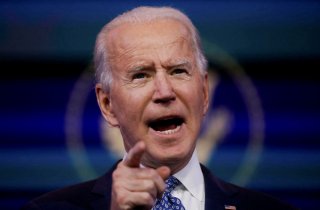Joe Biden’s Transatlantic Bridge to the Indo-Pacific Region
The United States rallies democracies to compete with China’s autocratic model.
The first two differences were on display in Europe: Biden is adamantly and thoroughly committed to working closely with allies and negotiating multilaterally. These priorities depart sharply from any hint of unilateralism and unpredictability. Biden's embrace of these traditional U.S. preferences also largely accounts for America’s renewed standing internationally, for example, as reflected in a recent Pew poll. President Biden European diplomacy could not erase doubts about the future U.S. leaders. Still, it did remind the world of America’s indispensable leadership in mobilizing allies and partners around a joint, positive agenda to tackle crucial problems.
The third difference in approaches between Trump and Biden is the latter’s genuine concern about improving the plight of the common man or woman. Whether U.S. foreign policy can alter the human-rights abuses of China in Xinjiang or political oppression in Hong Kong, the American president is letting the world know that what matters is the dignity of every human being and that democracy is the best guarantor of individual liberty. As NATO allies declared in Brussels, what matters most about the treaty alliance is that “it guarantees the security of our territory and our one billion citizens, our freedom, and the values we share, including individual liberty, human rights, democracy, and the rule of law.”
The final two differences, which are apt to become more apparent in the coming months, are specifically about China. Fourthly, the Biden administration seeks to differentiate threats from competition that can be managed by improving US capabilities. An early indication of this distinction came in a one-hundred-day review of supply chain security that led to an announcement essentially reaffirming the Trump-era placement of Chinese tech companies, including Huawei, on a list of fifty-nine entities off-limits to U.S. investors. At roughly the same time, however, the administration also revoked President Trump’s decision to penalize TikTok and WeChat, which remain popular means of communication and pose only a very indirect threat, such as collecting big data. While the commercial and political interests among the G7, EU, and NATO members vary, Biden’s transatlantic travels have strengthened the international will to create trusted supply chains and help establish international technology standards congruent with democratic values.
The fifth and final area is that the Biden administration will, at the appropriate time and focused selectively on issues of mutual importance, seek to engage China in strategic dialogue. The climate crisis was an immediate subject of bilateral dialogue, and trade followed on its heels. These are complicated issues, but there is every reason to think negotiators can make progress. The security challenge is whether Beijing wants to cooperate in conversations about nuclear weapons, emerging technologies such as Artificial Intelligence, hypersonic missiles, and autonomous weapons. Meanwhile, it is also essential to build on historical understandings about avoiding dangerous encounters, whether they occur at sea, in the air, in space, or cyberspace. Conversations continue despite bilateral tensions, and the NATO joint statement urged such dialogue. China is resisting talks that might constrain its military modernization. Still, perhaps it can be convinced that the great powers share a common interest in ensuring technological innovation does not trigger a catastrophic conflict.
Cynics may see moral equivalency between U.S. and Chinese leadership, arguing that it appears to be a hegemonic order either way. But that obscures a fundamental difference. While Xi’s vision would recreate a Sino-centric order in which an authoritarian big power reigns, Biden’s vision entails a rules-based system in which individual liberty is protected, and big and small powers are equal under the law. That’s why Biden needs to rally so many different governments to stand together.
Xi’s China rebounded from its early coverup of the coronavirus to demonstrate some advantages of an authoritarian system. However, in 150 days, Biden has contained the pandemic at home and launched a plan to vaccinate the world. Thus, there is no better litmus test for Biden’s bridge joining transatlantic and transpacific partners than its ability to execute its ambition to end the global pandemic in 2022 and prevent the next pandemic. If these like-minded countries can implement this plan, then Biden will have shown good reason to put all his faith in the democratic model of governance.
Dr. Patrick M. Cronin is the Asia-Pacific Security Chair, Hudson Institute.
Image: Reuters

